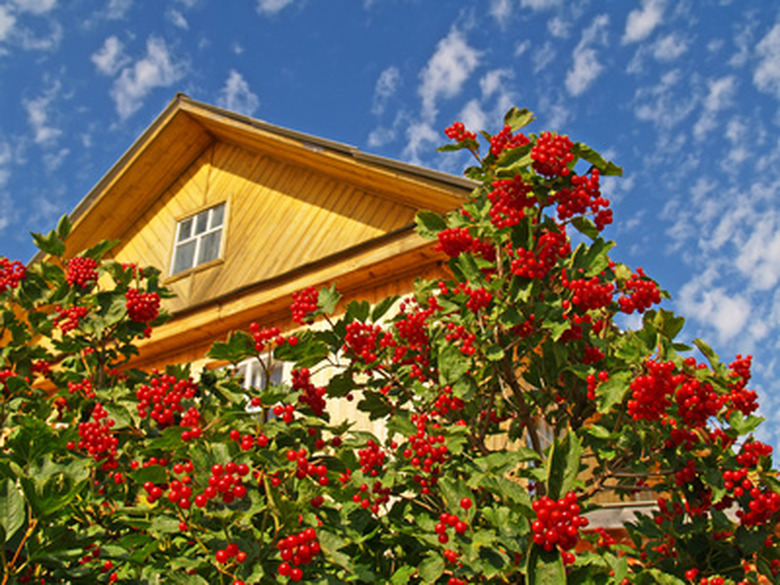Growing Viburnum In Texas
Viburnum is a genus of flowering and fruiting, evergreen and deciduous shrubs with at least three common species thriving in Texas, Viburnum odoratissimum, Viburnum suspensum and Viburnum tinus. Viburnum provides nearly year-long interest in the Texas garden. The pink or white spring flowers are accompanied by thick, velvety green leaves in spring and summer, golden and red leaves in fall and bright red berries in the fall that persist into winter.
Step 1
Provide a growing site with good daily sun exposure, but some afternoon shade so they can better tolerate the heat of Texas summers.
Step 2
Prepare a planting soil that is easy draining and rich in nutrients, with roughly 20 percent organic matter. Boost deficient soils by adding generous amounts of compost and well-aged manure to the soil at planting time. Alternatively, apply these as an annual topdressing around established viburnums. Provide a slightly acidic soil pH between 5.5 and 6.5 pH. Amend neutral and alkaline soils with elemental sulfur to boost the acidity, if needed.
- Viburnum is a genus of flowering and fruiting, evergreen and deciduous shrubs with at least three common species thriving in Texas, Viburnum odoratissimum, Viburnum suspensum and Viburnum tinus.
- Boost deficient soils by adding generous amounts of compost and well-aged manure to the soil at planting time.
Step 3
Water your viburnum deeply to keep the soil evenly moist at all times, when there is not sufficient rainfall to accomplish this. Monthly watering or less may work in cooler seasons, but summer heat and dry weather may make watering every four to seven days a necessity. Feel into the the soil and when dry to the touch at an inch or two down, water generously.
Step 4
Apply a 3-inch thick layer of organic mulch around your viburnum plants once or twice each year. Pine straw, shredded bark and cocoa bean hulls will all work. Mulch will help hold needed moisture to the soil, insulate the roots from Texas' seasonal temperature fluctuations and keep weeds from cropping up.
Viburnum In Winter
Some viburnum have wonderful winter variety. The mapleleaf viburnum (Viburnum acerfolium), hardy in USDA zones 3 through 8, bears clusters of black berries that often persist through the winter. Most viburnum will make it through mild winters without a problem, sometimes even keeping their leaves. Plant viburnum in full sun to partial shade and in moist, well-drained soil. Stop watering and fertilizing in fall and place a 2-inch layer of mulch around the base of the plant to conserve moisture and keep the soil temperature even. As a family, Viburnum are hardy, but sometimes experience winter injury. If your viburnums are semi-evergreen or evergreen, foraging animals may feast on the leaves in winter. For those with brown leaves, prune off all of the dead-looking branches, making a clean cut with pruning shears right above new buds in the spring.
- Water your viburnum deeply to keep the soil evenly moist at all times, when there is not sufficient rainfall to accomplish this.
- If your viburnums are semi-evergreen or evergreen, foraging animals may feast on the leaves in winter.
Things Needed
- Water
- Compost
- Aged manure
- Elemental sulfur
- Organic mulch
